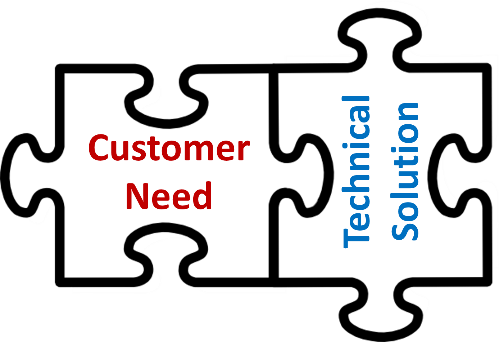How to Ensure Knowledge Sharing Occurs Across Your Organization
“Everything we have in R&D is in the heads of our people.”
When a senior technical leader made this remark in a recent client meeting, the sentiment seemed benign, even obvious at first.
As I reflected on it, though, I realized that it might have been more of a lament than some trivial digression. People, after all, are unpredictable. They silo themselves – constraining interactions to people they know and relate to – within their function. They forget to copy people on emails. They have flights cancelled and miss important meetings. They move; they quit; they retire. How stressful it must feel to know that “everything you have in R&D” – the entire innovation engine of your massive corporation – resides in several unpredictable brains; how critical it must be to figure out effective ways to transfer that knowledge between and beyond them.

At the most fundamental level, knowledge transfer is about making connections to identify new solutions, needs, and growth opportunities. Done correctly, successful knowledge transfer programs allow R&D scientists to learn about the customer needs and pain points that market-facing teams are hearing every day so they can tailor their efforts to develop a valuable solution accordingly.

In the early stages of a company’s life, when everyone on the team knows each other and works in the same place, there is that luxury of proximity. Knowledge transfer happens naturally at the water cooler along with discussions about weather and plans for the weekend. But as companies scale to become larger, more global organizations, they lose this informal channel for cross-functional conversation and must design new processes and mechanisms to replace it.
Many software solution providers will claim they can solve this problem with their product, and we agree that a good knowledge management database is often a crucial starting point; however, it is ultimately static and an incomplete solution. To really make high-impact connections, it is imperative to complement those tools with social, interpersonal approaches to break down functional silos and integrating them into day-to-day operations.
A variety of companies do this successfully at different scales. For example:
- Many of our clients, especially those with large central R&D functions, have staff in dedicated roles who act as a direct liaison between R&D and the businesses. They have a dual-reporting relationship and are responsible for activities like developing and evaluating R&D project proposals to ensure that they are aligned with business needs. These liaisons may also be responsible for reviewing the knowledge management databases to ensure that the insight from hundreds or thousands of sales calls is being aggregated and that action is resulting accordingly.
- Others also use regular face-to-face knowledge sharing forums to crowdsource and disseminate insight. One famous advanced material conglomerate holds numerous daily technology forums (totaling over 1,000 per year across multiple global sites) where employees can present successes, failures, inventions in search of an application, market needs in search of a solution, etc. The regularity and openness of this dialogue creates an informal network of connections, which they colloquially refer to as a “human intranet.”
- Lastly, we’ve facilitated several strategic planning and innovation management workshops where the knowledge transfer that occurs has an outsized impact relative to the half-day that is invested. For example, many of our clients use technology roadmapping to have a structured conversation that incorporates the viewpoints from all different functions (R&D, sales and marketing, manufacturing, applications engineering) into one integrated roadmap. These workshops institutionalize the exchange of information and increase alignment through the creation of a shared, collective vision.
A well-organized database is an important asset for large companies to keep track of their intellectual capital, but ultimately, knowledge management is driven by interpersonal interaction. By setting up channels for regular communication, organizations create opportunities for unlikely partnerships to form and unexpected discoveries to be made. There are lots of different ways – both organizational structure- and process-based – to facilitate knowledge transfer practices more successfully, but the bottom line is this: enable your people to engage with each other, and you enable innovation.
Find out how Newry can help your organization move smarter to move faster. Get traction in your market.
